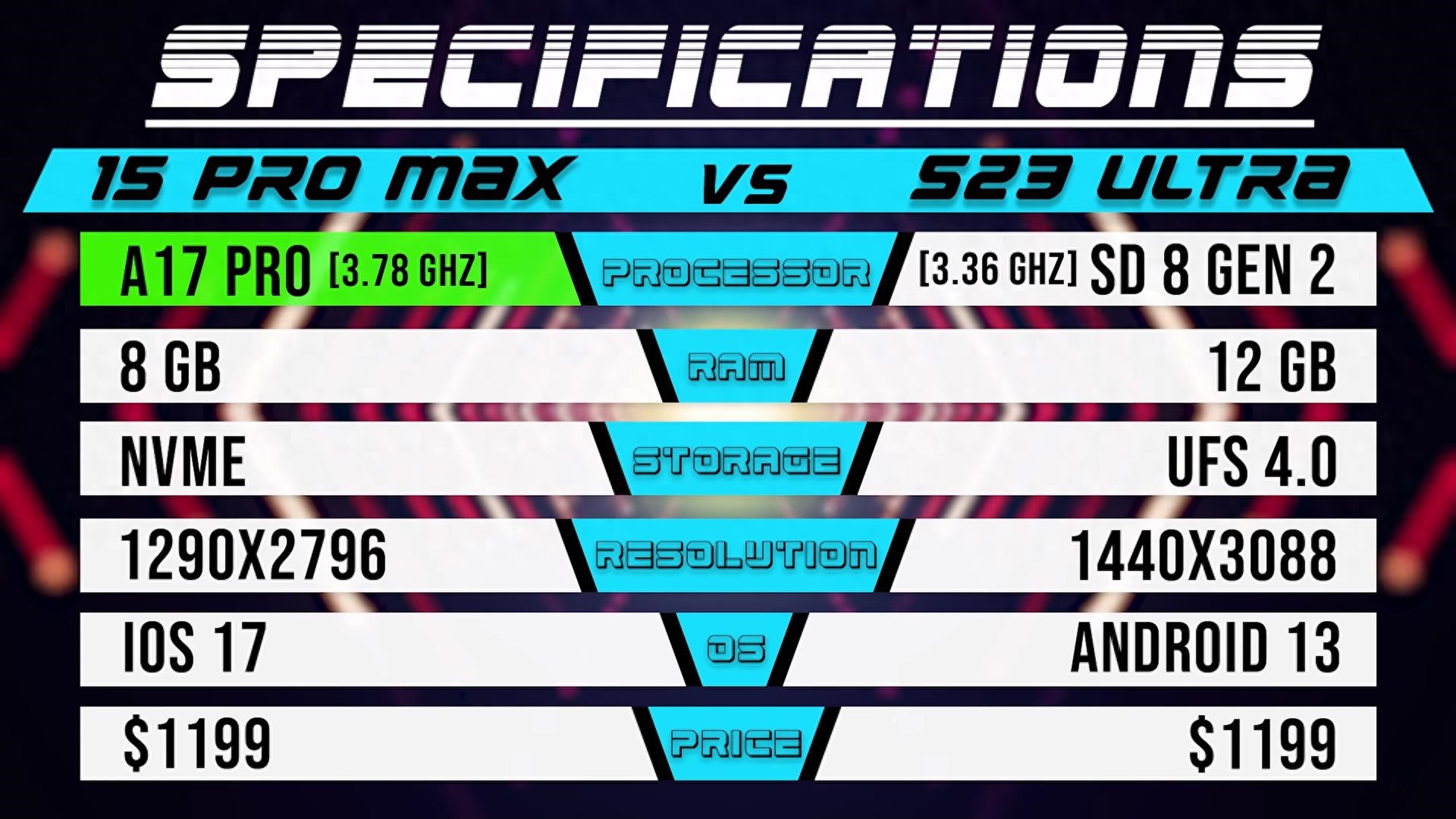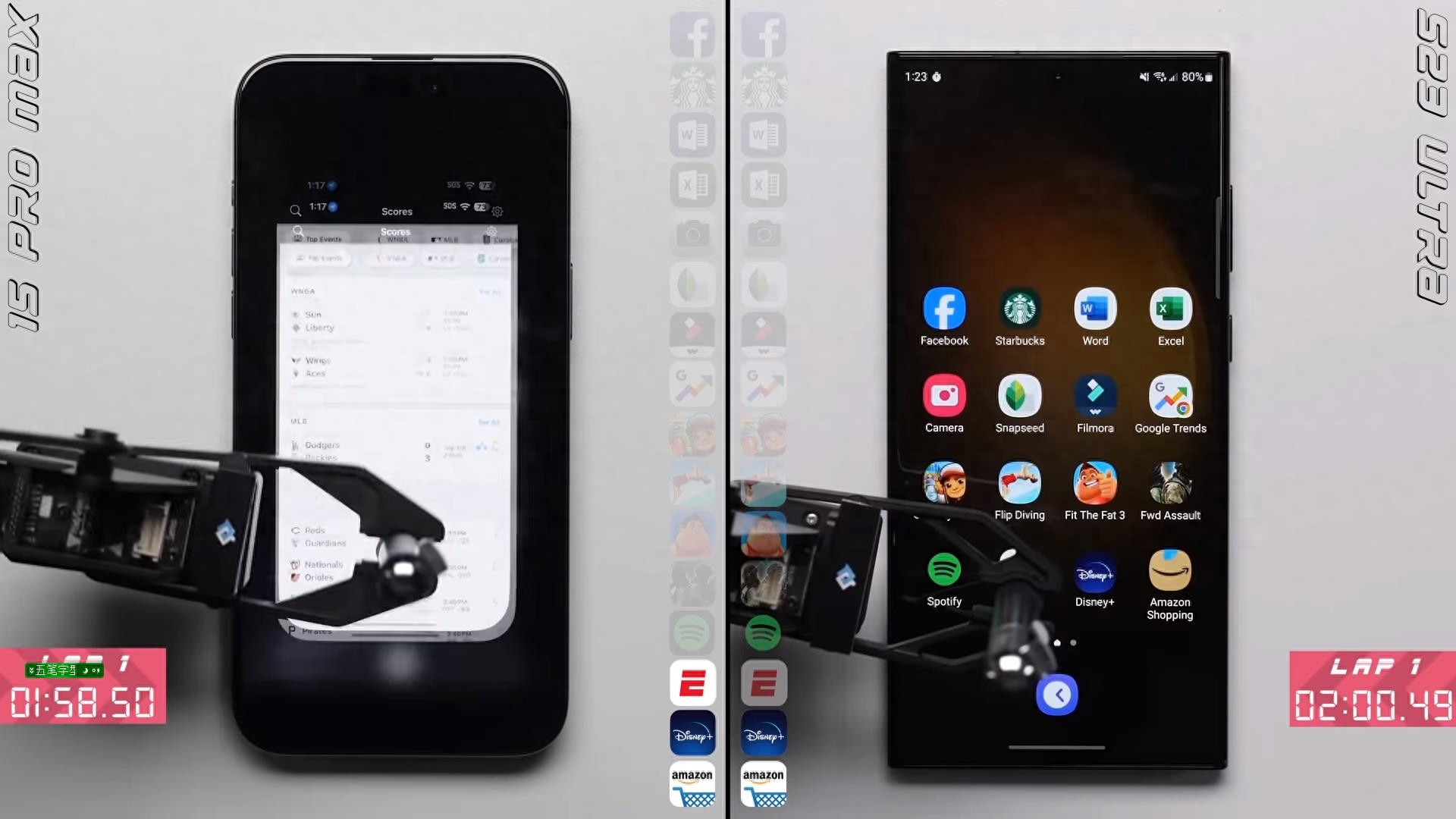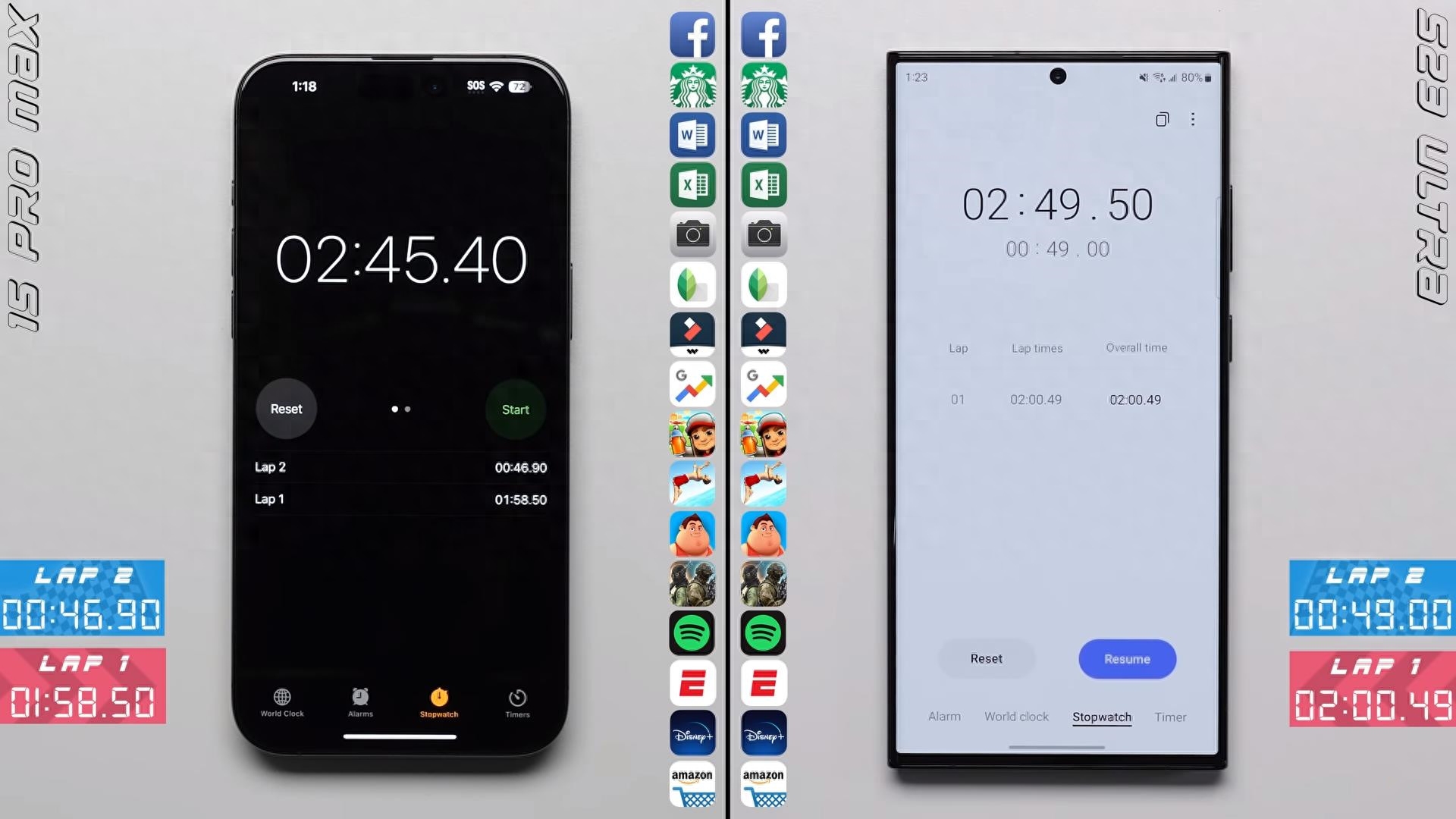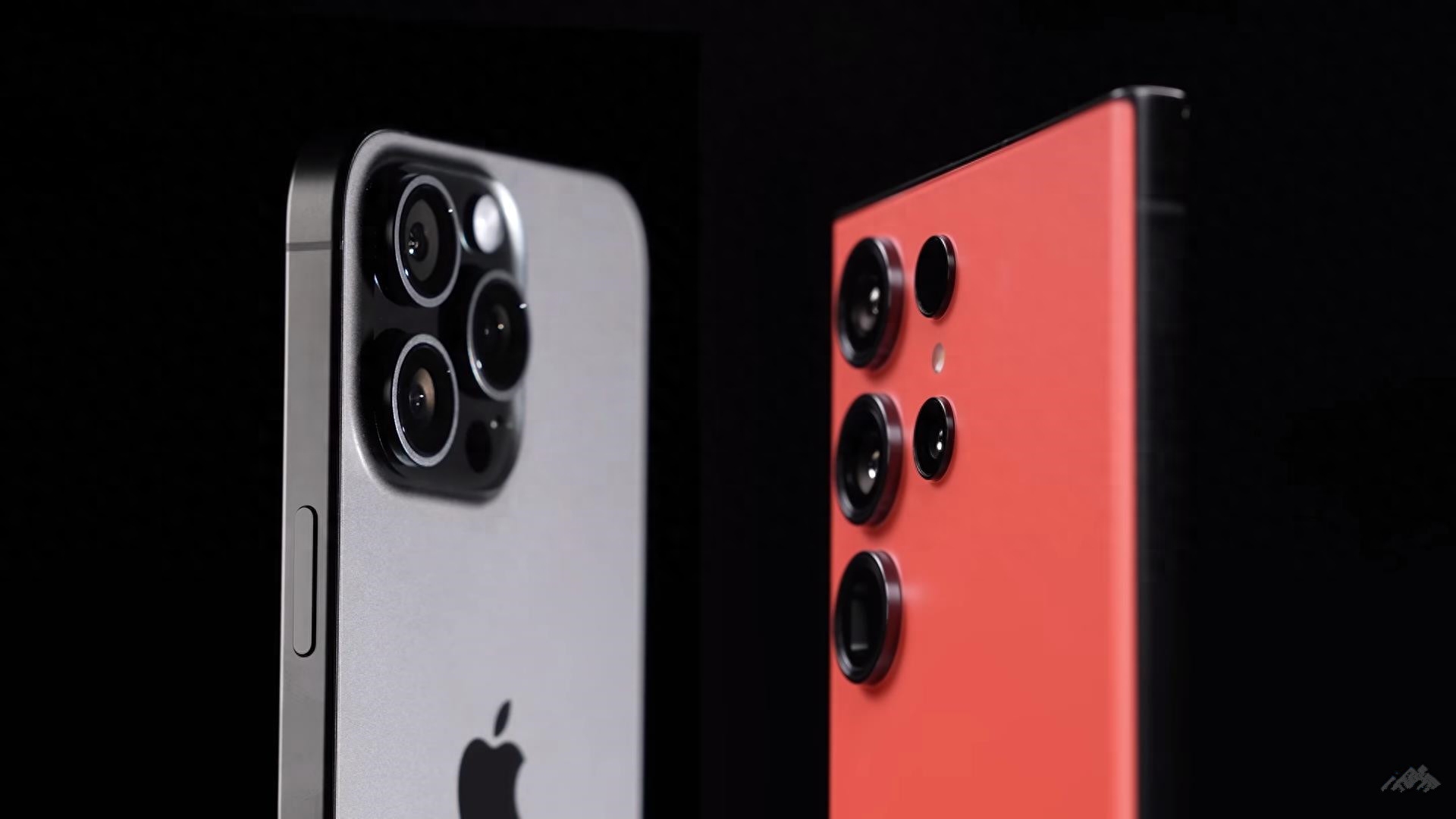Apple’s A17 Pro and Qualcomm’s second-generation Snapdragon 8, both utilizing 3-nanometer and 4-nanometer processes respectively, currently dominate the mainstream mobile phone processor market. Notably, the second-generation Snapdragon 8 is found in the Samsung S23 Ultra, but it’s worth mentioning that this version is customized and outperforms other brands of mobile phones.
Now, let’s delve into the performance gap between the A17Pro chip and the customized second-generation Snapdragon 8 chip used in the Samsung S23Ultra.
The performance test featured two flagship phones: the iPhone15ProMax, equipped with the A17Pro chip, and the Samsung S23Ultra, sporting the second-generation Snapdragon 8 clocked at 3.36GHz. These phones boasted 8GB and 12GB of RAM respectively and used NVME and UFS4.0 storage specifications. Their operating systems were iOS17 and Android 13.
The test’s methodology was straightforward: after clearing the background of both the iPhone15ProMax and Samsung S23Ultra, we opened 16 software applications consecutively and recorded the time taken.
In the initial round of software opening tests, both the iPhone 15 Pro Max and Samsung S23 Ultra exhibited nearly identical software opening speeds. While there were minor variations in software opening speeds, the overall performance of the two phones remained consistently on par, with no noticeable differences.
Following the first round of testing, it was revealed that the iPhone 15 Pro Max and Samsung S23 Ultra took 1 minute 58 seconds and 2 minutes respectively to complete the task. In essence, with all background processes cleared, the time difference in continuously opening 16 software applications between the iPhone15ProMax and Samsung S23Ultra was a mere 2 seconds. This negligible difference indicates that their performance and speed were virtually identical.
For the second round of testing, the 16 software applications were opened again with the apps already running in the background. In this scenario, iPhone15ProMax and Samsung S23Ultra simply resumed the apps.
However, the results of the second round were equally surprising. The second round of software opening times for iPhone15ProMax and Samsung S23Ultra were 46 seconds and 49 seconds respectively. Consequently, the time taken to open these applications in the second round differed by only 3 seconds.
When you combine the times for the first and second rounds, the total time taken by the iPhone 15 Pro Max and Samsung S23 Ultra was 2 minutes and 45 seconds and 2 minutes and 49 seconds, respectively, with a mere 4-second gap.
Despite the disappointing software opening speed results for the iPhone15ProMax, which is equipped with the cutting-edge 3nm A17Pro chip, it’s important to note that this chip is more advanced than Samsung S23Ultra’s second-generation Snapdragon 8. Surprisingly, in terms of performance, although the A17Pro chip emerged as the winner, its advantage was marginal, and there was no substantial gap between the A17Pro and the second-generation Snapdragon 8.
Furthermore, iOS contributed significantly to the 4-second lead, so the performance gap is not solely attributable to the A17Pro chip. If you’re in the market for a high-performance mobile phone, the Samsung S23Ultra remains a strong contender worth considering.
Read Also: Samsung released Exynos 2400 chip: CPU speed up 70%, equipped with RDNA3 GPU










